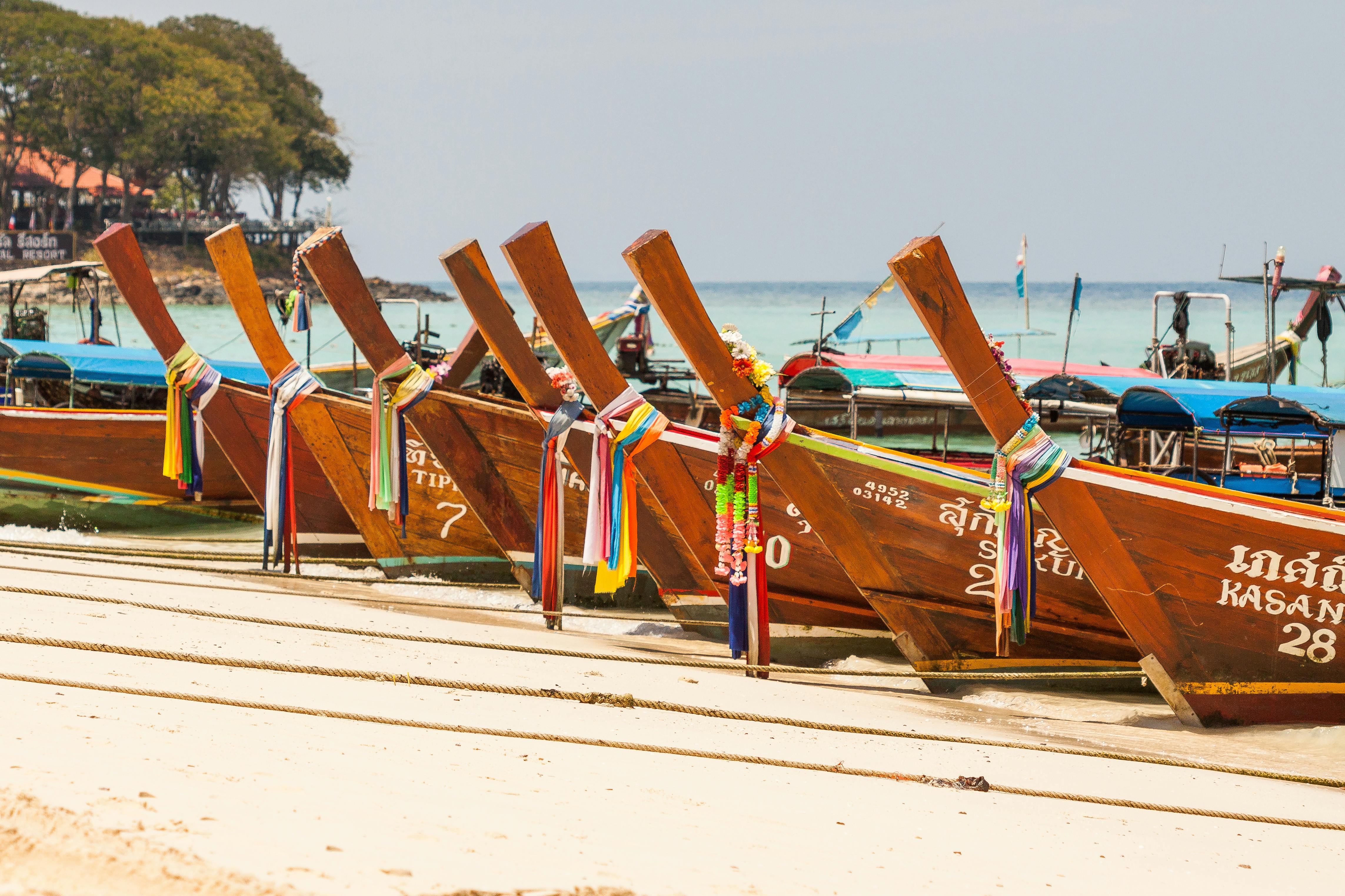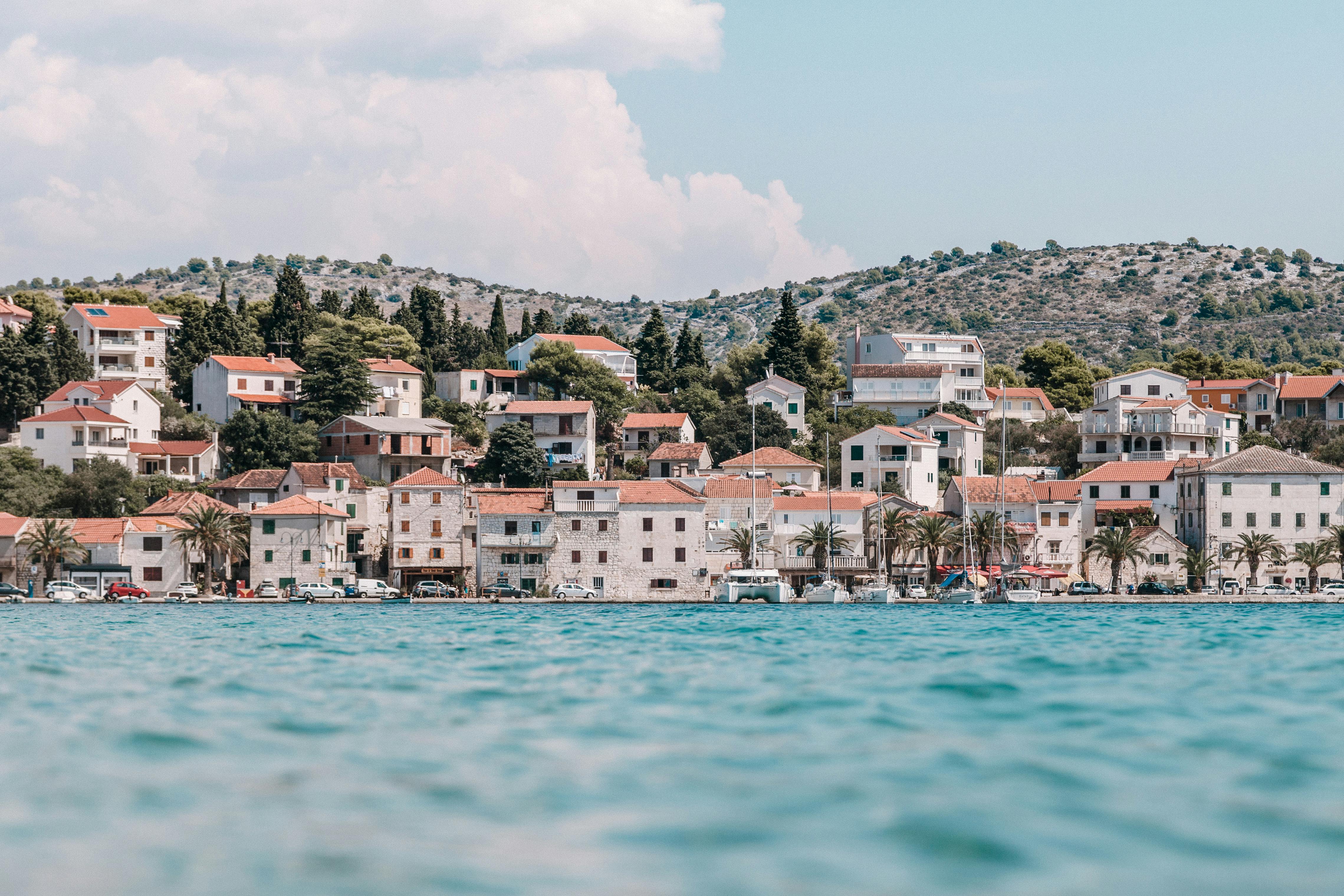Top destinations for digital nomads in 2024

The world we knew 5 years ago has changed. Remote work has become a modern-day staple and the picture of digital nomads has transformed, as well.
Digital nomadism used to be associated with offbeat people working/relaxing on the beach with a coconut in one hand and a laptop in the other—something a few could afford to sustain a living. But now, it's a mainstream element of the modern work culture and the main type of employment for about 40 million people worldwide.
Following the rise in popularity, more and more governments are making an effort to attract remote workers, which has resulted in over 50 countries offering digital nomad visas. With so many options available, finding the right location may get tiring and time-consuming, so we're here to help.
Whether you're a seasoned digital nomad or simply thinking about transitioning to this lifestyle, this list will serve as an excellent guide for choosing your next working destination.
Can you work from anywhere as a digital nomad?
Also called the adventurers of the modern day, digital nomads are remote workers, mainly freelancers, who combine work and traveling and therefore aren't tied to one office space. Unlike people on workation, digital nomads also don't return to their home country for an extended period.
With that in mind, not all professions are suitable for the digital nomad lifestyle, and even if you're able to work remotely, your desired destination may not be open to you. Each country has its own set of rules regarding digital nomadism, with digital nomad visas being the main deciding factor.
If your preferred place is not on the list of digital nomad visa countries, working there visa-free or under a tourist visa is illegal. For example, if you're based in Thailand but provide freelance services to an employer located in Portugal, you still work in Thailand and need to comply with their laws.
As long as you want to stay in a country for a longer period than your passport or tourist visa allows (usually 90 days), you'll have to get a digital nomad visa. It often also grants holders tax exemptions and other benefits.
What does digital nomading mean for your freelance business?
Digital nomading can be a great way to extend your network and not only meet your peers, but also get to know new potential clients in the cities you will be based. A great way to build these connections is to go to the local networking mixers, book a spot at a co-working space or join industry conferences.
When starting to work with new clients that are based in the cities you decide to temporarily reside, you might have to meet their requirements for business-friendly invoices or dealing with different currencies. Abillio as an all-in-one platform for invoicing, accounting, and payments without needing to set up your own company is great for addressing this new challenge, as its offering is tailored to meet these requirements.
How do you choose the best digital nomad destinations?
The possibility of obtaining a digital nomad visa is just one of the factors to take into account when choosing your ideal digital nomad destination.
There are many parts to the equation, so several websites like VisaGuide or Club Med have even created their own indices for ranking different countries and helping people decide where to go next.
Below is the list of the most important aspects you should check before purchasing a one-way ticket to a specific country:
- Time zone – Will living several hours ahead or behind your clients or employer interfere with your work and possible meeting schedule?
- Internet speed and access – Is it easy to get a reliable Internet connection in your accommodation or public spaces?
- Safety – What's the crime rate in the area? Is the country safe and politically stable in general?
- Cost of living – Can you afford to sustain a lifestyle you desire? Will you be able to pay the rent, buy food, and still make a decent profit?
- Climate – What's the weather like during the year, and will you be ok with it? Is it hot, cold, dry, or humid? Is there a monsoon season?
- Local digital nomad communities – Is there a community of expats and more people like you with whom to share experiences and form friendships?
- Tourism possibilities – Is it a tourist destination or a more secluded local hotspot? Can you easily get around and explore other places after work?
Use this list to guide your research whenever you want to evaluate your potential country of temporary residence.
Top 7 destinations for digital nomads
While over 50 countries are open to digital nomads, a few stand out from the rest and perform well in several of the previously mentioned aspects.
Let's explore the seven best destinations for digital nomads across continents.
Thailand

It's affordable, warm, and well-connected —Thailand hits all the marks as a top digital nomad destination. You can stay on an island with pristine beaches and crystal clear water or go to its bustling cities and immerse in the vibrant culture.
Thailand has long been a popular choice among people who want to escape winter and use it as a starting point to travel to nearby Asian countries, but now, it has also emerged as a preferred destination for digital nomads.
Bangkok, Chiang Mai, and Ko Pha Ngan are among the top 10 places on Nomadlist. And it's not just because of the beautiful nature or low cost of living. Thailand is a fast-emerging economy that will likely become a high-income country in the next decade and therefore has everything a digital nomad may need, from a high-speed Internet connection to other technologies.
Spain

Europe's gem and the Nr. 1 digital nomad country on the VisaGuide's list—that's Spain. What used to be a top destination for athletes participating in training camps or golf players, in the last few years, has also become a digital nomad hub.
Spain enjoys a thriving expat community with some cities having many services available in English. Plus, as of January 2023, Spain offers a digital nomad visa which can be renewed for up to 5 years.
Depending on where you land in Spain, you could enjoy summer-like weather all year long (e.g. in the Canary Islands), milder temperatures with a lot of sun (e.g. in the Costa del Sol region), or greater diversity in continental Spain (e.g. Madrid). The country is also home to Valencia—the world's best city to live in.
Japan

While not a typical and classic choice, Japan is a rising contender on the list of the best digital nomad destinations. Because of its high-level safety and Internet access, Nomadlist members have rated Tokyo as the second-best place to go in 2024.
The reason for this surge in popularity may also be due to the recent launch of the digital nomad visa in Japan. Even though it limits the stay to six months and can't be renewed, it won't prevent many freelancers from enjoying the Japanese culture.
Japan stands out with its cutting-edge technologies and a mix of the old and the new. Similarly to Thailand, you can find a working environment that best suits your needs from the busy streets of Tokyo to the serene temples and peaceful landscapes of Kyoto.
Mexico

Mexico has always been a favorite holiday destination due to its historic landmarks, beautiful beaches, affordable living, and delicious food. And it's also one of the most exciting and accessible destinations for U.S. nomads and other foreigners.
Even though the country doesn't have a dedicated digital nomad visa, the current tourist visa allows you to work remotely for up to 180 days. Alternatively, you may apply for a Mexican temporary resident visa if you wish to extend your stay up to 4 years and own a property there.
Safety concerns and Internet infrastructure could cause a headache in some areas of Mexico. However, as long as you stay in expat hotspots like Lake Chapala, Mérida, or Tulúm, everything should be fine.
Argentina

We've had North America, Asia, and Europe. Now, it's time for South America and Argentina is the absolute favorite there. Just seeing the pictures of Patagonia or Iguazu Falls may instantly prompt you to purchase a flight ticket and pack your bags.
In 2022, Argentina became one of the few South American countries to introduce a digital nomad visa. It doesn't have clear timeframe restrictions but you have to meet certain requirements to obtain the visa.
Argentina is among the less-known but up-and-coming digital nomad destinations. Buenos Aires is gaining traction and ranked third on Nomadlist mainly due to its low cost of living, Internet connectivity, and convenient time zone. However, safety and cleanliness are still an issue in some areas, and some level of Spanish could be beneficial.
Portugal

Often called the digital nomad haven, Portugal has lately become a premier destination for foreigners looking to combine remote work and traveling. The country boasts excellent Internet infrastructure, a vibrant expat community, and various locations from big cities to beach towns to suit every need.
Portugal does have it all. According to the Global Peace Index, it's one of the safest countries in the world and has a premium healthcare system. Plus, Portugal offers several types of digital nomad visas depending on the period you want to stay there.
Because of its increasing popularity among expats, rental prices in urban areas have gone up in recent years. Yet, Portugal still presents affordable living costs compared to other Western European countries.
Croatia

Among the pioneers in issuing digital nomad visas, Croatia is undoubtedly one of the top destinations for remote workers. What was used as a tool to regain pre-Covid tourism numbers has now helped the country allure thousands of freelancers from around the world.
The stunning Adriatic coastline, breathtaking national parks, and charming historic towns are just one side of the medal. Croatia also has a relatively low income threshold (€2,600/month or $2,774/month) to obtain a digital nomad visa and offers a stable Internet connection along with numerous modern co-working spaces.
The only downside is that the country's heavy dependence on tourism has made it progressively more expensive in the last couple of years and prices will likely continue to rise in the future.
Final verdict
As more and more countries open their doors to digital nomads, the world has become a playground for remote workers. Whether you prefer the tranquil island of Kho Pha Ngan, the hilly streets of Lisbon, or the historic charm of Buenos Aires, there's a suitable place in every corner of the world for your remote office.
Use this list to find the ideal location for your next work-and-travel adventure, and embrace your nomadic spirit to the fullest in 2024!
If you're looking to make freelancing hassle-free and administer payments from wherever you are, explore Abill.io